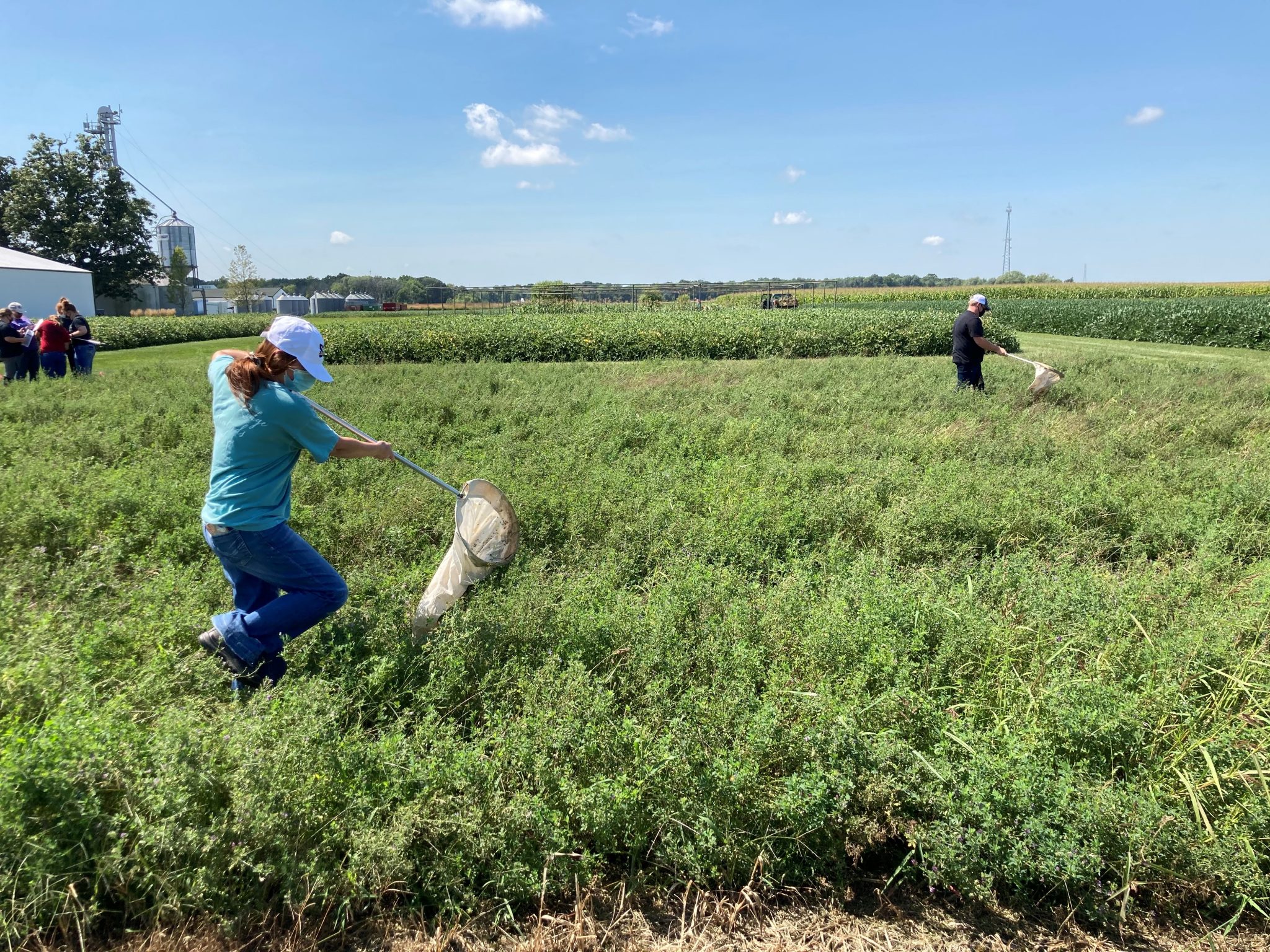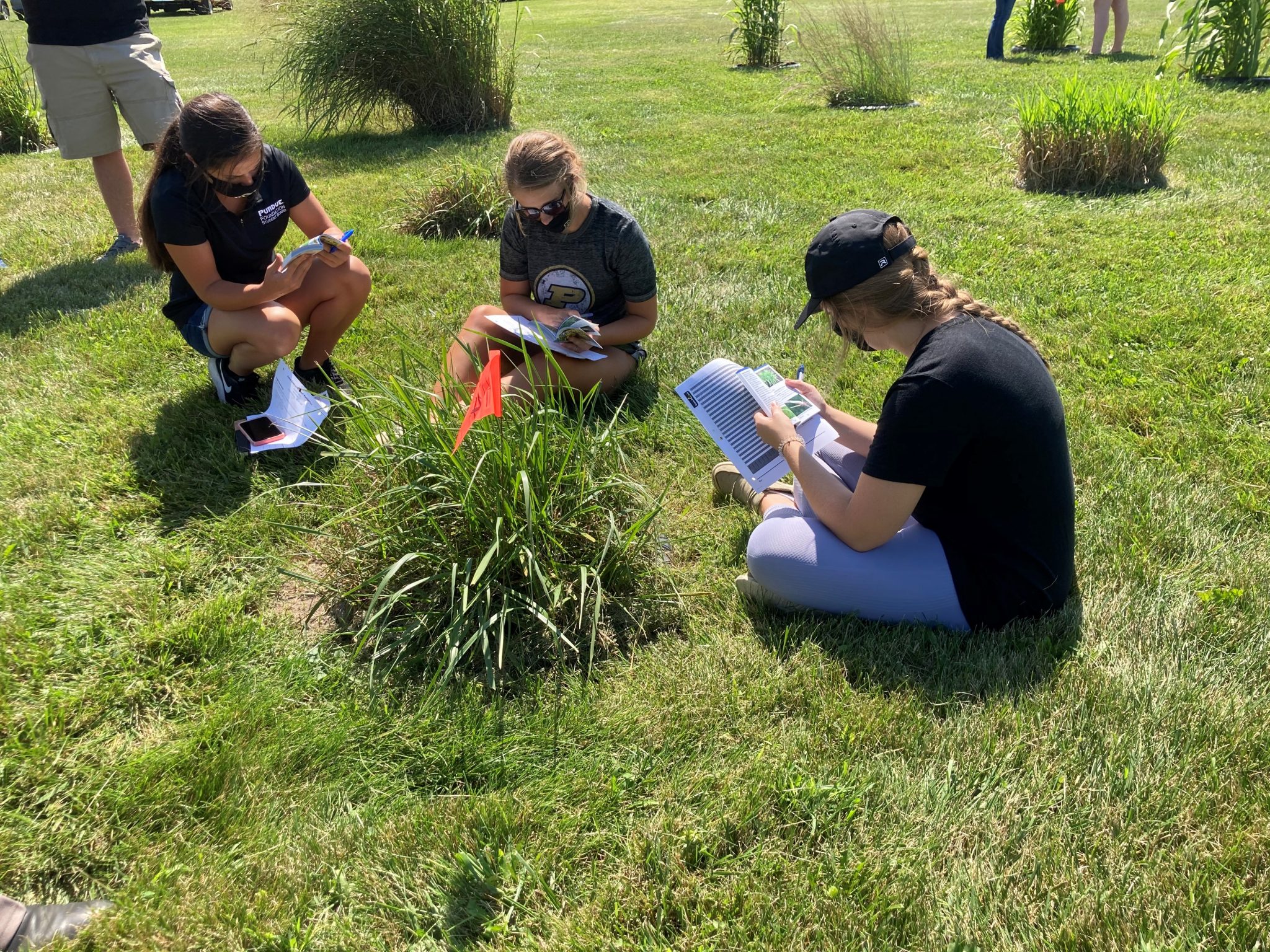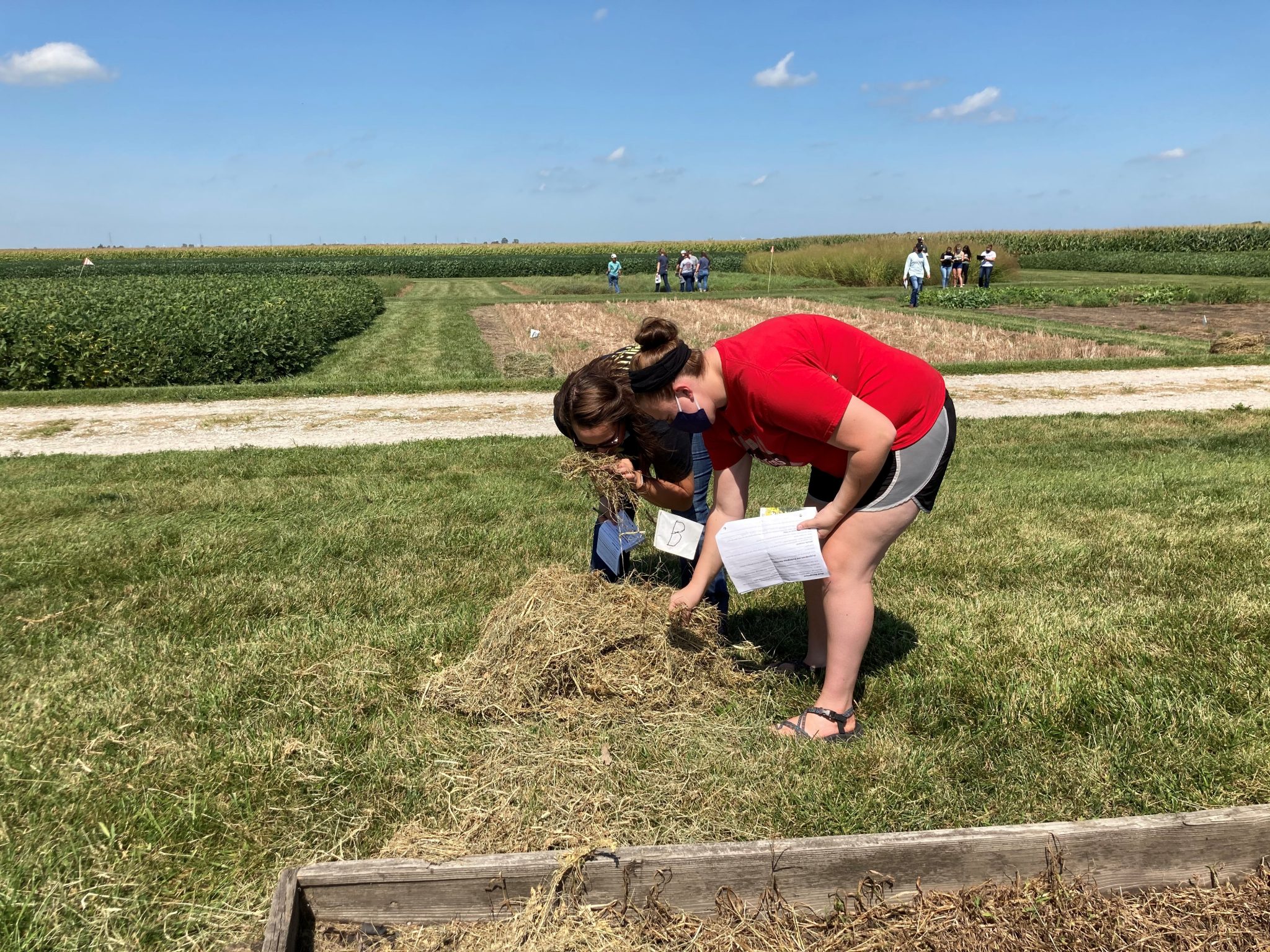I had the opportunity yesterday to deliver a laboratory lesson to over 40 Purdue University undergraduate agriculture students enrolled in Dr. Ron Lemenager’s beef management class. All students, Dr. Lemenager and I were wearing masks to protect one another from the persistent virus that lingers about. The students seemed eager to be in an outside laboratory environment at the Purdue University Crop Diagnostic Teaching and Research Center. The goal of the day was to introduce the students to forage diagnostic skills that were part of five different stations. It was a joy to see these young adults in purposeful action as they used resource materials to develop diagnostic skills. Continue to develop your own diagnostic skills as crop losses can be minimized with timely scouting and appropriate recommendations.

Using a sweep net to identify beneficial and harmful insects in alfalfa. (Photo Credit: Keith Johnson)

Identifying problematic pasture weeds and determining different herbicide options for their control.
(Photo Credit: Keith Johnson)





